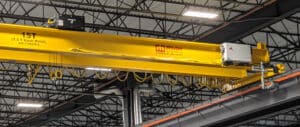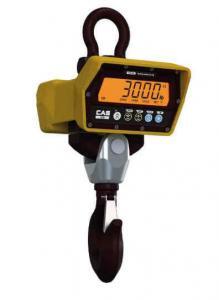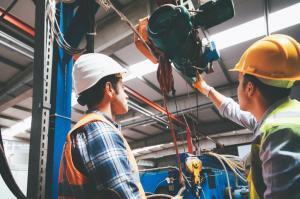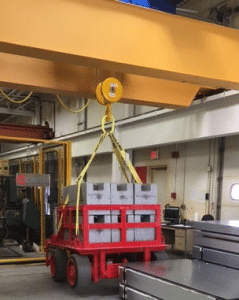 1. Proper Training Is Key
1. Proper Training Is Key
One of the most critical safety steps employers can take is to ensure that only trained and qualified operators handle cranes. A study by OSHA found that 70% of crane accidents could have been prevented with proper training. Crane operators need to understand the hazards, be familiar with the crane’s features, and know how to operate it safely. Training should also extend to everyone on the worksite, so they understand crane warning signals and can respond appropriately.
2. Regular Inspections and Maintenance
Routine inspections and maintenance are essential to prevent equipment failure and ensure safe crane operation. Inspections should cover critical components like ropes, chains, the electrical system, and structural integrity. These checks help catch issues before they become serious. At RMH Systems, we recommend developing a detailed maintenance schedule to ensure no aspect of crane safety is overlooked. Our technicians follow the manufacturer’s recommendations and regulatory requirements, ensuring cranes stay in top working condition.
3. Safety Features and Warning Systems
Cranes that move overhead can be “out of sight and out of mind” for ground workers. That’s why safety features like audible warning devices are crucial. These alerts notify workers of moving loads overhead, reducing the risk of accidents. In addition, the crane’s controls should be clearly labeled with their functions, and operators should have a clear view of the crane’s path before moving any load.
4. Effective Communication and Signaling
Clear communication between crane operators and ground personnel is critical to ensuring safe crane operations. Standardized hand signals and communication methods, especially in busy or noisy environments, can prevent miscommunication that may lead to accidents. Operators should always confirm signals before moving loads and coordinate all movements to avoid unexpected shifts or hazardous conditions.
 5. Understanding Load Capacities
5. Understanding Load Capacities
Operators must always be aware of the crane’s load capacity and never exceed it. This includes knowing the weight of the load and ensuring that it is safely rigged. Before moving any load, the crane operator should inspect the surrounding area to ensure the path is clear of obstacles or people. Moving loads beyond a crane’s capacity or over an unsafe path can lead to catastrophic accidents.
6. Personal Protective Equipment (PPE)
Personal protective equipment (PPE) is essential in any crane operation. Workers should always wear helmets, gloves, and safety shoes when working in areas where cranes are operating. These precautions can prevent injuries from falling objects or other crane-related hazards.
7. Rigging and Sling Safety
Proper rigging is essential for safe crane operations. Loads should be securely attached to the crane’s hook using appropriate slings or fixtures. Any twists, kinks, or sharp edges on the rigging equipment should be addressed immediately to prevent damage or accidents. Maintaining the correct sling angles is equally important to avoid overloading.
8. Emergency Preparedness
Every worksite should have a clear emergency plan in place, and all personnel should be trained on how to respond in case of an incident. Having a preparedness plan not only ensures a faster response during emergencies but also minimizes the risk of accidents escalating.
9. Code Compliance and Standards
In the U.S., crane safety falls under various codes and standards, including OSHA and ASME regulations. These codes ensure that both operators and inspectors follow stringent safety protocols. For example, OSHA’s section 1910.179 outlines standards for top-running double girder overhead cranes, while ASME B30.17 details the training requirements for operators, technicians, and inspectors. Staying up to date with these regulations is vital for preventing accidents.
10. Advanced Crane Safety Features
Modern overhead cranes come equipped with several safety features to reduce the risk of accidents. Features like spring-return controllers, which default to the “off” position when not in use, or momentary contact buttons, which stop the crane if it encounters an obstacle, can make crane operations safer. Operators should be trained on these features and should never operate a crane that lacks these safety mechanisms.
11. Commitment to Safety: Everyone’s Responsibility

Crane safety isn’t just the responsibility of the operator—it’s a collective effort. From the ground workers to the crane inspectors, everyone has a role to play in maintaining a safe environment. Inspectors, in particular, are tasked with ensuring that the crane meets all safety requirements and identifying any potential risks. With proper training, inspectors help create a safe workplace by ensuring that all equipment is in good condition and being used correctly.
Crane Inspection and Maintenance with RMH Systems
At RMH Systems, we don’t just provide material handling solutions—we help you maintain them for long-term safety and efficiency. Our team of experienced technicians is available to inspect and maintain your overhead cranes, ensuring they meet all OSHA and ASME safety standards. Regular inspections and preventative maintenance can help you avoid costly breakdowns, extend the lifespan of your equipment, and most importantly, protect your team from workplace accidents.
Reach out to RMH Systems today to schedule a crane inspection or discuss a customized maintenance plan for your facility. Let us help you keep your cranes—and your workers—safe and operational.
